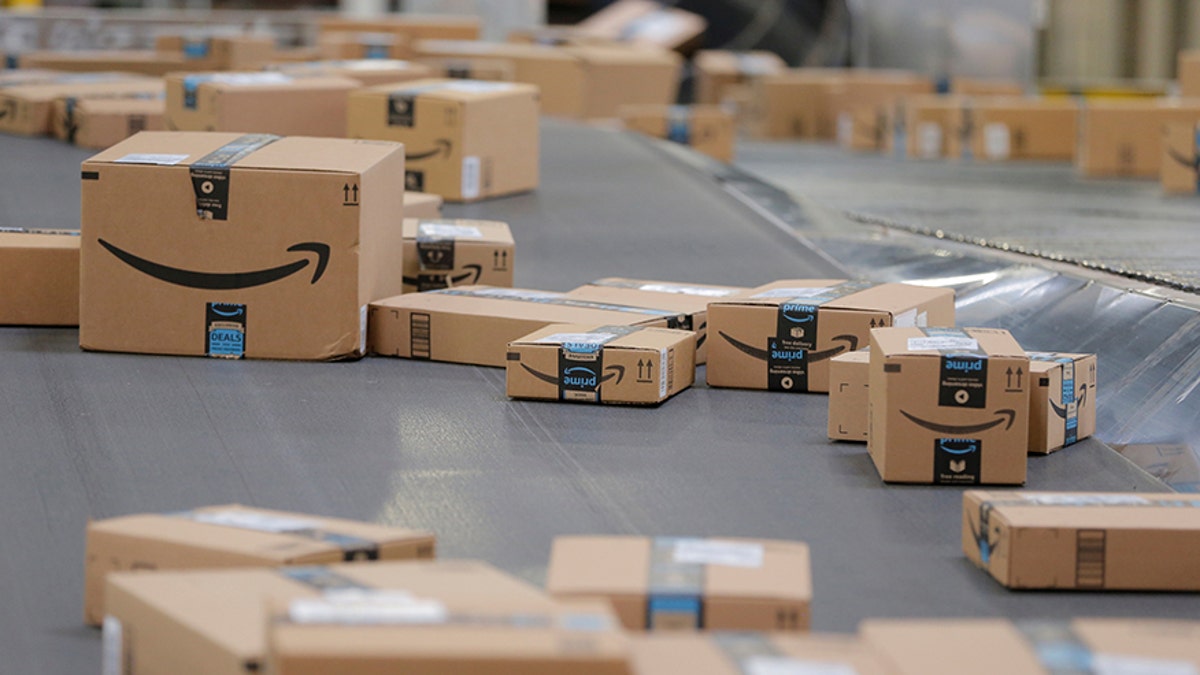
The customer, who ordered mascara, originally thought the shipment was a mistake. She contacted Amazon in an effort to identify who had sent the item, but got nowhere after repeated calls. (REUTERS/Lucas Jackson)
Amazon was granted a patent in 2016 for a new way to transport human beings around Amazon warehouses. Workers would sit in a cage-like enclosure on top of a claw-arm robot, which researchers have described as an "extraordinary illustration of worker alienation."
The patent was highlighted in a case study called "Anatomy of an AI System," published on Friday by Kateb Crawford (New York University, and principal researcher at Microsoft Research) and Vladan Joler (University of Novi Sad).
Crawford and Joler's work describes how "the worker becomes a part of a machinic ballet, held upright in a cage which dictates and constrains their movement."
In the patent, Amazon describes how the device could be used to bring workers near robots in order to repair or remove malfunctioning trolleys or pick up items that have fallen off the robot-controlled shelves.
More From PCmag
Amazon's warehouses are highly automated, and while currently the system will shut down automatically should an unauthorised person enter the robot-only zone, this patent seems to be a way to blur the boundary between the areas for automated machines and areas safe for humans. It states that "there may be circumstances where it is necessary for human operators to traverse, or otherwise go into, an active work space."
Eight inventors in the Boston area (where Amazon Robotics is located) are credited for the patent. Amazon Robotics was formed when the company purchased Kiva Systems six years ago.
In a comment to the Boston Herald, Amazon spokeswoman Lindsay Campbell said that the company files a number of "forward-looking patents" which encourages employees to experiment and invent, but such a device is not in use in any Amazon fulfilment centers. Dave Clark, senior vice president of operations at Amazon also tweeted as a response to this patent receiving coverage.
This article originally appeared on PCMag.com.
